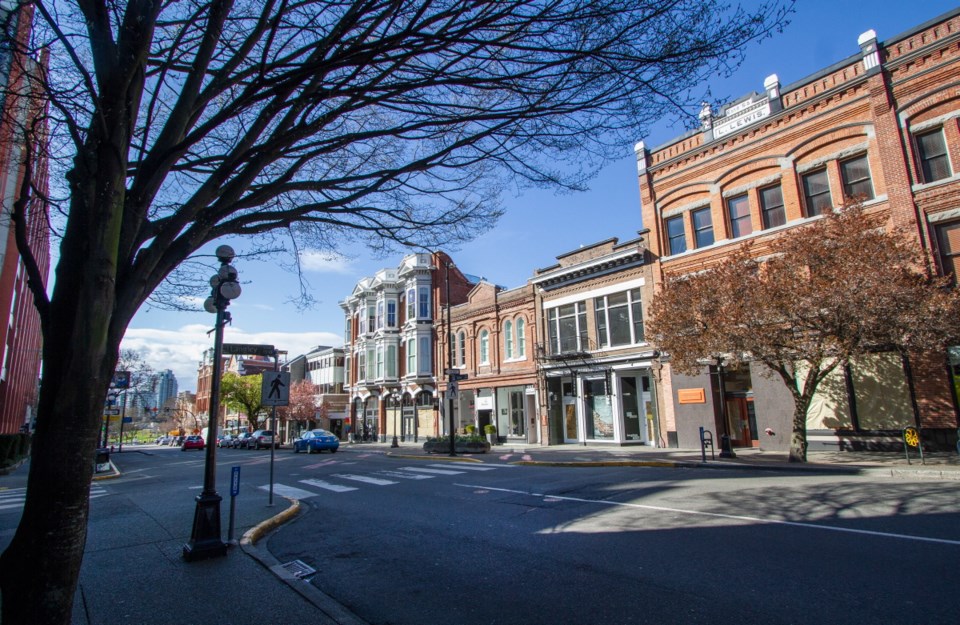Greater Victoria’s unemployment rate jumped to 4.6% last month as Canada lost a record one million jobs due to the coronavirus outbreak; the national unemployment rate leaped to 7.8%.
The capital region’s unemployment rate had been 3.4% in February.
Fallout from the virus “wiped out 40 months of net employment gains, and the worst is yet to come,” said Brian DePratto, senior economist for TD Economics.
B.C. Finance Minister Carole James noted that the province lost 132,000 jobs last month, raising its unemployment rate to 7.2% from 5%.
“These aren’t simply numbers. They represent individuals, they represent families and they represent businesses in our province who are struggling right now,” James said. “This is an incredibly stressful time for British Columbians.”
Statistics Canada’s data were collected March 15 to 21, before the full impact of the pandemic was felt, and thus don’t reflect the “entire picture,” said James. She warned of more losses when Statistics Canada releases its labour force survey next month.
“There are thousands of other British Columbians who are out of work and would normally be seeking work right now, but they are hampered in their efforts for various reasons related to the pandemic.”
As a result of the outbreak, sectors have been shut down, with job losses greatest in businesses requiring face-to-face contact and with little option of working from home, Statistics Canada said.
B.C. is among the province’s hardest hit by job losses, along with Quebec and Ontario, the federal agency said.
The national rise in unemployment, from 5.6% in February, is the largest month-over-month increase since 1976.
Canada was last at the 7.8% unemployment rate in October 2010.
The nation’s employment rate fell by 3.3 percentage points to 58.5%, the lowest rate since April 1997, Statistics Canada said.
James said the provincial government is focused on a plan that addresses the critical situation many people and businesses find themselves in. “And we’re working with a new economic recovery task force and engaging stakeholders in every sector to ensure we have a plan in place for B.C.’s recovery.”
Unprecedented relief programs have been introduced to help people and businesses, she said.
Sectors experiencing the highest job losses are accommodation and food services, information, culture and recreation, educational services, and wholesale and retail trade — all major players in the economy of the province and the capital region.
Most job losses are seen in private-sector businesses providing non-essential services, Statistics Canada said.
There are no plans to reduce the provincial government’s workforce, James said.
The capital region normally enjoys a low unemployment rate and, while it remains the lowest in the country, according to Statistics Canada, it is rising.
The size of the capital region’s labour force dropped by 0.9% to 207,500, with 197,900 people working, a decline of 3.4% from February.
Those aged between 15 and 24 have been particularly affected. About 20% of employed youth have either lost their jobs or seen their hours significantly reduced.
The employment rate for young people is now at 49.1%, the lowest since 1976.
The Business Council of B.C. issued a report saying that as a result of business shutdowns and physical-distancing measures, the province is “almost certainly headed for a rate of business mortality in 2020 that will far exceed anything B.C. has ever experienced before.”
Jock Finlayson, executive vice-president and chief policy officer for the council, and Ken Peacock, its chief economist, said many of the private-sector jobs lost could return if the lockdown ends in a few weeks.
“But the longer the restrictions stay in place, the larger will be the number of B.C. businesses that disappear due to insolvency or permanent closure.”
If that happens, workers who are on temporary layoffs will see their jobs disappear, they said.
Finlayson and Peacock said if employment drops by 180,000 to 200,000, the unemployment rate would run about 11% this year, and if the downturn delivers deeper effects, it could rise to between 15% and 17%.



